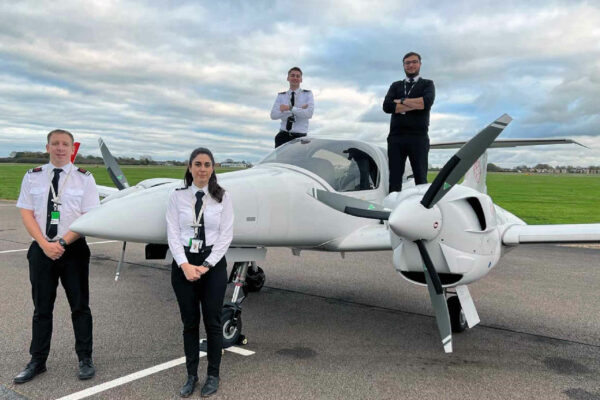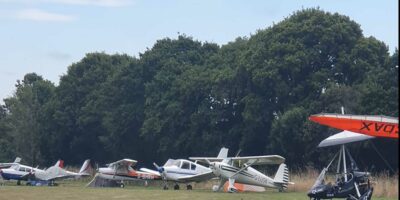I sometimes review the FLYER forum for monthly inspiration and recently noticed a thread about strip flying that had taken on a legal dimension. Under discussion was a video from a well-known American Youtuber about having his licence suspended by the FAA, after making a low pass to inspect a possible landing site.
Now, there may be more to the story than described, but at face value it seemed a rather stringent interpretation of the ‘500ft’ rule and may call into question the common practice in the US of making a low pass before landing at an unfamiliar ‘off airport’ location.
The FAA alleged that during the pass the aircraft came within 500ft of persons or structures and that because the manoeuvre was not ‘necessary for take-off or landing’, the rule was breached. Various witnesses and security camera footage were apparently used to support the allegation. I understand the case is still under appeal.
So, you may be wondering if this has any relevance for the UK, for example in the context of flying into private strips? The rules in this area are similar to the US, but there is some additional detail in the UK that might protect similar manoeuvres, assuming they were conducted in accordance with normal aviation practice.
While I suspect being prosecuted for low flying is not something that most GA pilots will have to worry about, the relevant rules should be considered when operating into strips and when conducting practice forced landings.
Minimum heights
Under the European Standardised Rules of the Air (Part-SERA), the two VFR ‘minimum height’ rules in SERA.5005(f) are that:
‘Except when necessary for take-off or landing, or except by permission from the competent authority, a VFR flight shall not be flown:
(1) over the congested areas of cities, towns or settlements or over an open-air assembly of persons at a height less than 300m (1,000 ft) above the highest obstacle within a radius of 600m from the aircraft; or
(2) elsewhere than as specified in (1), at a height less than 150m (500ft) above the ground or water, or 150m (500ft) above the highest obstacle within a radius of 150m (500ft) from the aircraft.’
Note that when overflying congested areas, there is also the requirement under SERA.3105 to be high enough to enable landing in the event of an emergency, without undue hazard to people on the ground.
The ‘500ft rule’
As many will be aware, the actual ‘500ft rule’ in the UK is that ‘aircraft must not be flown closer than 500ft to any person, vessel, vehicle or structure except with the permission of the CAA’. The exception for take-off and landing still applies. The variation from the SERA rule is via a general permission under SERA.5005(f) and published in CAA ORS4 1496.
ORS4 1496 (para 8) also permits aircraft to come within that 500ft distance ‘if practising approaches to land at or checking navigational aids or procedures at an aerodrome’.
If anyone queried a low pass or go around at strip, perhaps coming within 500ft of a farm building, para 8 is probably a viable defence, assuming the pass was genuinely to practice an approach to land and not an unsolicited ‘beat up’. Note that in the practice forced landing scenario, you are not excused from the UK 500ft rule, unless it happens to be conducted at an aerodrome.
Practically speaking, most strips will have accepted procedures for minimising the overflight of people or structures (and possibly livestock) and assuming these are followed, all will normally be well. I suspect, in the case of our Youtuber, he may have fallen foul of some local politics between the landowner and a neighbour. It is always worth checking whether there are any issues like this when going to an unfamiliar strip.
What is an aerodrome?
An obvious follow-on question is what qualifies as an aerodrome, would a strip count? The definition is quite broad and, in this context, no distinction is made between licensed and unlicensed locations.
The Air Navigation Order defines ‘aerodrome’ as ‘any area of land or water designed, equipped, set apart or commonly used for affording facilities for the landing and departure of aircraft’.
The full definition has some additional elements, but the above is sufficient in this context. I would suggest most strips meet this definition, assuming they have some established use, although I am not aware whether that position has ever been legally tested.
The SERA definition is similar – ‘a defined area (including any buildings, installations and equipment) on land or water or on a fixed, fixed off-shore or floating structure intended to be used either wholly or in part for the arrival, departure and surface movement of aircraft.’
Other considerations
A caveat with these discussions is that both the ANO and SERA contain an ‘endangerment’ offence, which could be invoked if danger had been caused either to those on the ground or the aircraft itself.
The case law on this subject is variable but common sense and normal aviation practice should guide interpretation. The other context in which the low flying rules come up is with regard to ‘congested areas’ and the rules for overflying them, but that is probably a discussion for another day.
More info:
www.caa.co.uk/skywaycode
www.caa.co.uk/sera
ORS4 1496







